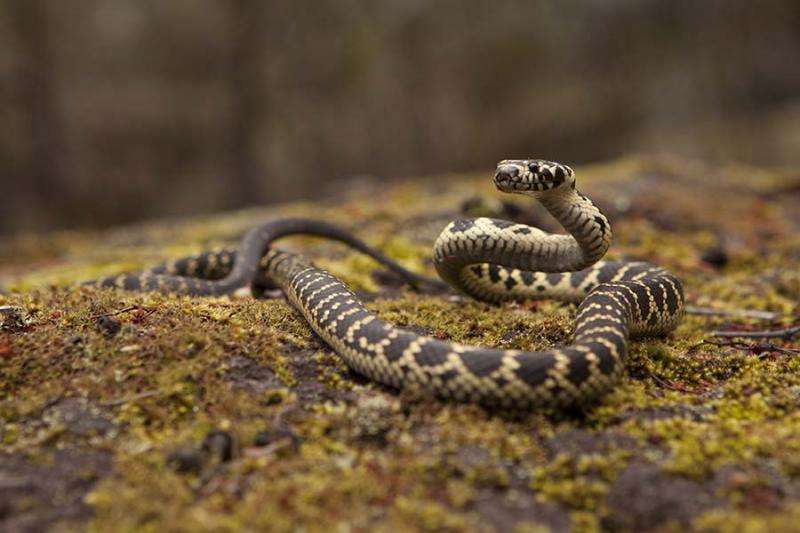Rock theft destroying snake habitat

One of the oldest and most spectacular animals found in the Sydney basin has become a casualty of the city's love for bush gardens.
The black and yellow broad-headed snake, once common in suburbs such as Bondi, Randwick and Watsons Bay, is now found in only a few pockets of bushland within 200 kilometres of Sydney. The sandstone rocks that were integral to its habitat now dot the suburban landscape in people's backyards.
The lucrative trade in bush rock, combined with relentless development, has contributed to the destruction of the species' habitat to make Hoplocephalus bungaroides one of Australia's most endangered snakes, says wildlife ecologist Dr Jonathan Webb.
Dr Webb has been monitoring broad-headed snake populations in locations south of Sydney for more than 20 years. The species is under such pressure that he will not reveal the precise location of his study sites.
Using mark-and-recapture techniques and radio telemetry, often in collaboration with the NSW National Parks and Wildlife Service, he has identified an environmental problem that is bigger than one species. The animal's decline is "the story of a whole ecosystem's destruction", says Dr Webb, a senior lecturer in the School of Life Sciences at the University of Technology Sydney (UTS).
"The broad-headed snake's ecology is so closely linked to one habitat resource, sandstone rocks, that if you take away the rocks you disrupt the whole ecosystem.
"People want to bring the bush into their backyard … people are taking rocks and selling them in landscape suppliers [and that] is what has really driven the decline in this species."
Dr Webb says many outcrops in the Sydney region were stripped of their rocks in the 1960s, '70s and '80s and "now rock collectors are targeting sites further afield", including the last strongholds for broad-headed snakes.
It is one of many species – including reptiles, amphibians, insects and small mammals – that rely on sandstone rocks for shelter and food.
Bush rock collection has been a huge industry for many years. While it is an offence to disturb or remove bush rock, and the National Parks and Wildlife Service conducts protection and public education programs, it is not illegal to sell the rocks.
"It's illegal to come into a national park and remove bush rock," says Dr Webb, "but because nurseries are still selling the product for $60 a square metre – roughly three rocks, so about $20 a rock – a truckload of rocks is worth a couple of thousand dollars."
Dr Webb says he has heard of vehicles with stolen number plates and people being run off the road in national parks after photographing illegal activity. The NSW Office of Environment and Heritage urges anyone who witnesses a suspected bush rock theft to contact the department but warns people not to approach suspected thieves.
"I'd love to see some laws in place that make it illegal to sell bush rock. I don't think there is any reason we need to sell this product. There are plenty of alternatives," says Dr Webb.
"Quarried rocks leave a much smaller footprint, and don't result in loss of habitat across broad geographic areas."
Linda Bell from the Office of Environment and Heritage says the Saving our Species program targets the removal of bush rocks and dead trees to protect or restore habitat for the broad-headed snake. She says limiting access to priority sites is one approach; creating more public awareness may also help.
Dr Webb says public knowledge of the negative effect of collecting bush rocks is very low. "People simply don't understand that having these rocks in their gardens contributes to environmental degradation," he says. "In most people's eyes, a rock is simply a rock."
He says an entire ecosystem is at risk unless consumers learn the importance of rocks to the health of Australia's bushland.
More information: To report suspected bush rock theft, phone the Environment Hotline on 131 555.
Provided by University of Technology, Sydney

















